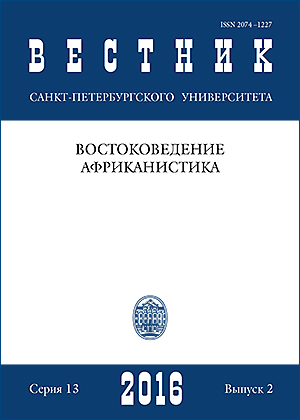Private or royal: laudatory epithets in Egyptian Middle Kingdom texts
DOI:
https://doi.org/10.21638/11701/spbu13.2016.203Abstract
Many epithets used in the Egyptian Middle Kingdom to glorify kings are not unique to royal texts and can be traced in earlier laudatory autobiographies of non-royal persons. Here the phraseology of the Lahun Hymns to the 12 th Dynasty king Senwosret III is analyzed, which had much in common with the texts of local rulers and high officials of the First Intermediate Period and the beginning of the Middle Kingdom. As the private and the royal spheres are traditionally separated in Egyptology, theories suggest that either royal eulogists had adopted phraseology originally used to celebrate local rulers, or that non-royals had borrowed from the lost royal repertoire. The contradiction in the directions of borrowing between private and royal texts would be irrelevant though, if we question the reality of absolute distinction between the two spheres.
Keywords:
Middle Kingdom, First intermediate period, laudatory epithets, common phraseology, royal and private texts, directions of borrowing
Downloads
References
Downloads
Published
How to Cite
Issue
Section
License
Articles of "Vestnik of Saint Petersburg University. Asian and African Studies" are open access distributed under the terms of the License Agreement with Saint Petersburg State University, which permits to the authors unrestricted distribution and self-archiving free of charge.





